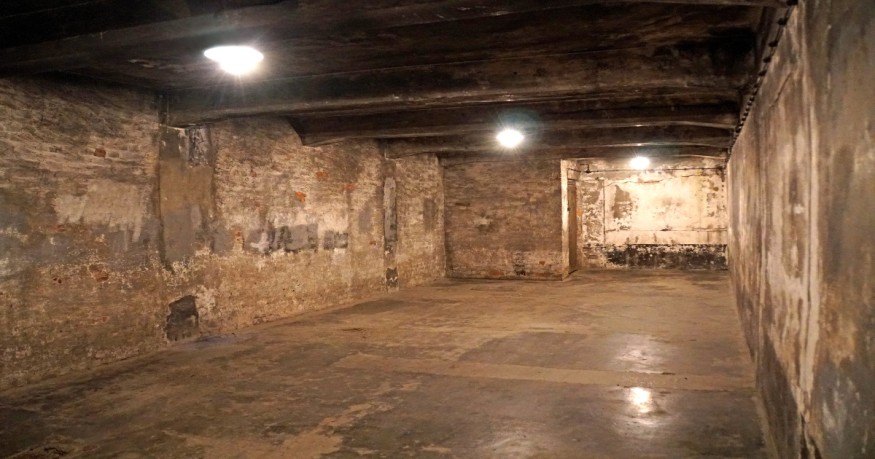Dark History: 'Gasoline Baths' at the US-Mexico Border

In 1917, American authorities in El Paso, Texas began to use a toxic chemical to disinfect all immigrants entering the United States through the US-Mexican border.
The rule came just after the election of Mayor Tom Lea, Jr. who was "obsessive about cleanliness." He sent telegrams to various senators in Washington, demanding a quarantine station at the border. In one message, he referred to the immigrants as "hundreds of dirty, lousey destitute Mexicans."
The new law required all entrants to be bathed in a kerosene mixture. The practice aimed to kill lice in a bid to prevent the spread of typhus due to outbreaks in several major Mexican cities. Workers were also required to strip down to be inspected while their clothes were steam-dried.
Migrants were also subjected to an inspection where their bodies, including their genitals, were checked for lice. Should border inspectors find traces of the parasitic insect on a worker, they would be shaved, head to toe, and doused in a mix of kerosene and vinegar.
Migrants would then receive a ticket which served as a proof they were clean. They were, however, required to go through the same procedure every eight days.
Several border personnel was found to have been secretly taking photographs of naked women going through the borders.
Carmelita Torres
A few days after the dangerous practice was launched, a 17-year-old Mexican woman who worked as a maid refused to take a 'gasoline bath,' sparking a protest at the El Paso border at what became known as the "Bath Riots."
Carmelita Torres had crossed the border every day for work. When she resisted going through the process, thousands of onlookers, including women, began protesting against the practice.
U.S. and Mexican troops quelled the riot and arrested the young maid. She was branded as "the leader of an anti-American riot" by the newspapers.
The unplanned rebellion happened on January 28, 1917, during the early morning. Torres was sitting in a trolley filled mostly with women as they crossed the Santa Fe International Bridge to head to work. When it was her turn, she refused to go through the humiliation and convinced the 30 women who were in the trolley to join her in defiance.
An hour later, there were more than 200 women protesting. By noon the same day, there were already "several thousand" protesting against the practice. The demonstrators reportedly threw bottles and rocks at law enforcement workers, hurling insults all the while. The protest blocked traffic into El Paso as some people laid down on the tracks to create a blockade.
The uprising was quelled after the border was closed for two days. Many of the demonstrators, including Torres, were imprisoned. Other protestors were publicly executed. According to historians, that was the last Torres was ever heard from or seen.
The toxic baths were continued for several years. Authorities used even more dangerous chemicals like the poisonous gas Zyklon B and the pesticide DDT. Migrants were also asked to take a literacy test and pay an $8 head tax to enter the borders.
In 1918, border agents began turning away "imbeciles, physical defectives, and persons afflicted with loathsome diseases."
More than 100,000 Mexicans were given gasoline baths at the border before health authorities deemed the practice dangerous and officially stopped the toxic baths in the 1960s.
Nazi Germany

The gasoline baths inspired Nazi scientists in 1937. Almost a decade after border agents added Zyklon B--- a cyanide-based pesticide--- to the toxic baths, a German scientist suggested the acid gas be added in Nazi disinfection chambers.
Scientists tried the pesticide on 600 Soviet war prisoners and 250 Polish prisoners in the basement of Block 11 at Auschwitz I. All died within minutes. Auschwitz became one of the largest killing centers of the Third Reich.
The dosing process murdered millions of people in Nazi concentration camps such as Auschwitz and Majdanek.
Zyklon B was made by two German companies who both went through a trial for creating the poison that took the lives of over a million people. Bruni Tesch and Karl Weinbacher---who served as the director and executive manager of Tesch and Stabenow respectively --- were found guilty and hanged on May 16, 1946.
Read More:
Subscribe to Latin Post!
Sign up for our free newsletter for the Latest coverage!
© 2026 Latin Post. All rights reserved. Do not reproduce without permission.















